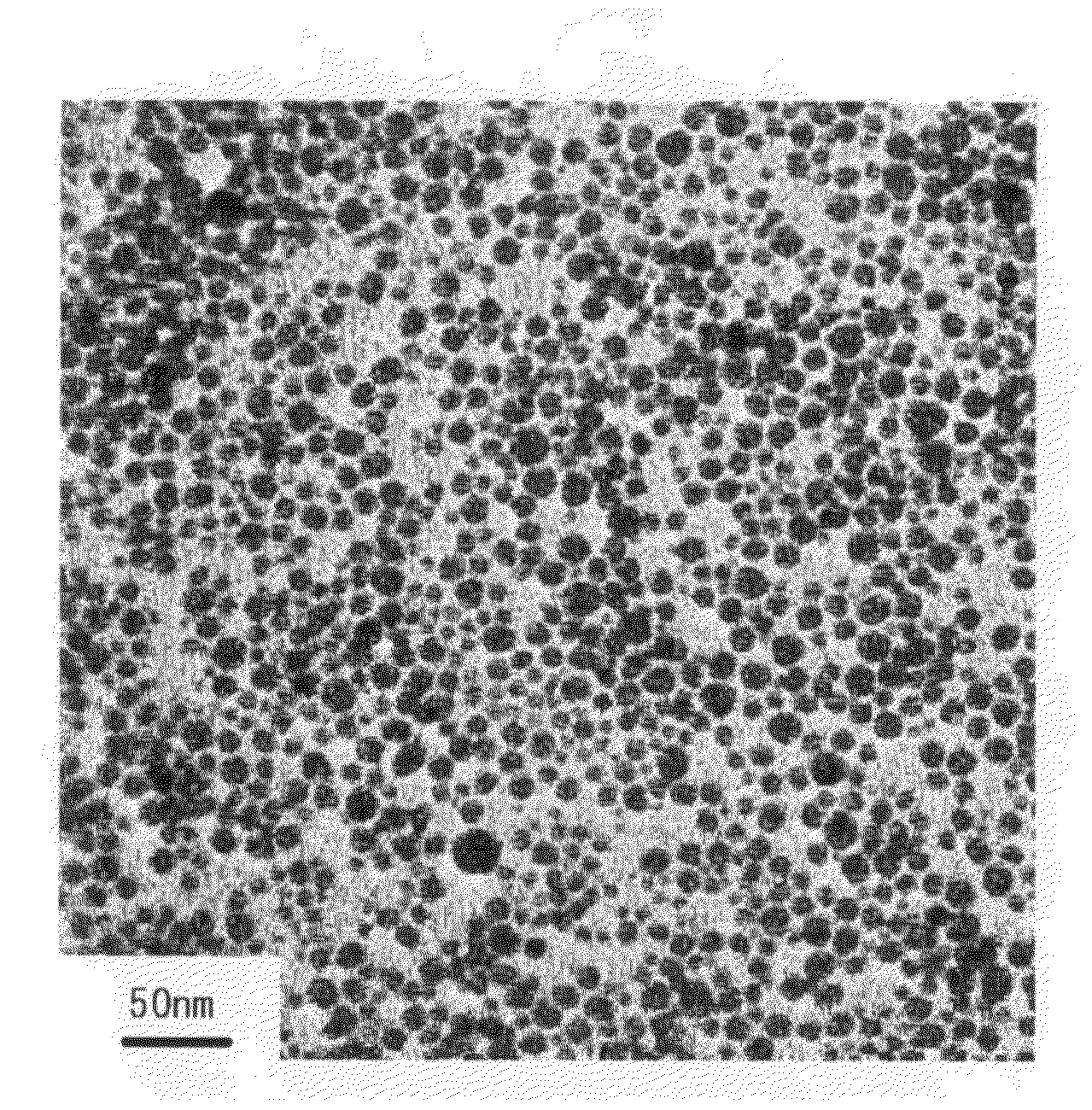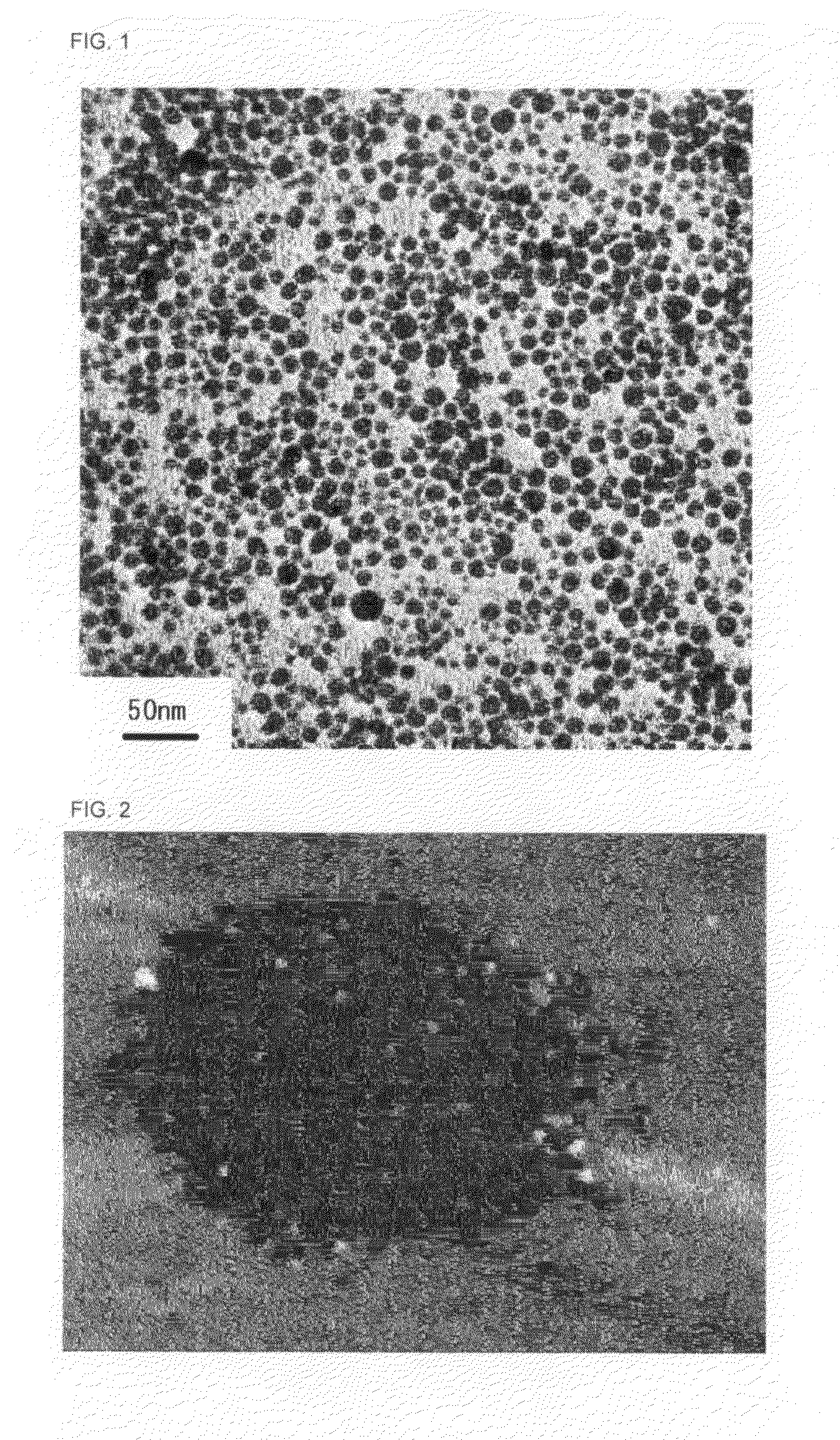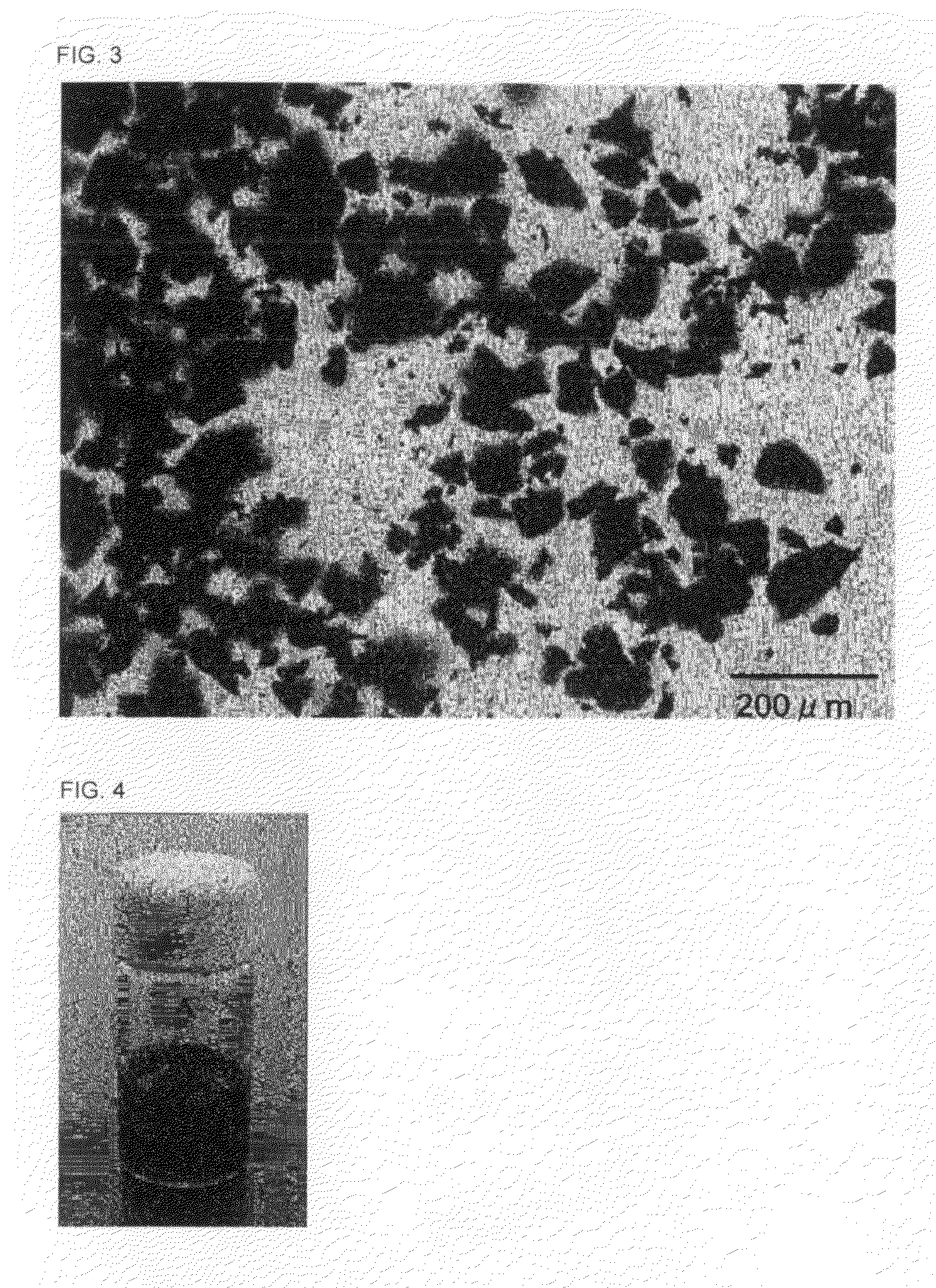Silver-containing powder, method for producing the same, conductive paste using the same, and plastic substrate
a silver nanoparticle and powder technology, applied in the direction of metal/alloy conductors, conductors, transportation and packaging, etc., can solve the problems of unsuitable industrial use in terms of production cycle and cost, process instability, and degradation of storage stability, so as to reduce the ability, ensure the effect of stability and stability
- Summary
- Abstract
- Description
- Claims
- Application Information
AI Technical Summary
Benefits of technology
Problems solved by technology
Method used
Image
Examples
synthetic example 1
Synthetic Example of Compound (X-1)
[0124]Under a nitrogen atmosphere, a chloroform solution (30 ml) containing 9.6 g (50.0 mmol) of p-toluenesulfonic chloride was added dropwise to a mixed solution of 20.0 g (10.0 mmol) of methoxy polyethylene glycol [Mn=2,000], 8.0 g (100.0 mmol) of pyridine, and 20 ml of chloroform for 30 minutes while being stirred in ice. After the addition, the mixture was further stirred in a bath at 40° C. for 4 hours. After the completion of the reaction, 50 ml of chloroform was added to dilute the reaction solution. Subsequently, the reaction solution was washed with 100 ml of 5% hydrochloric acid aqueous solution, 100 ml of saturated sodium hydrogen carbonate aqueous solution, and 100 ml of saturated saline solution in that order. The reaction solution was then dried with magnesium sulfate, filtered, and vacuum concentrated. The resultant solid was washed with hexane several times, filtered, and dried under reduced pressure at 80° C. to obtain 22.0 g of to...
synthetic example 2
Synthetic Example of Compound (Y-1)
[0132]Under a nitrogen atmosphere, 18.7 g (20 meq) of bisphenol A epoxy resin EPICLON AM-040-P (manufactured by DIC Corporation, epoxy equivalent: 933), 1.28 g (7.5 mmol) of 4-phenylphenol, 0.26 ml (0.12 mol %) of 65% ethyltriphenylphosphonium acetate ethanol solution, and 50 ml of N,N-dimethylacetamide were caused to react with each other at 120° C. for 6 hours. After standing to cool, the reaction mixture was added dropwise to 150 ml of water. The resulting precipitate was washed with methanol twice, and then dried under reduced pressure at 60° C. to obtain a monofunctional epoxy resin. The yield of the product was 19.6 g and 98%.
[0133]The measurement result of 1H-NMR of the resultant monofunctional epoxy resin is described below.
[0134]1H-NMR (CDCl3) measurement result:
[0135]δ (ppm): 7.55 to 6.75 (m), 4.40 to 3.90 (m), 3.33 (m), 2.89 (m), 2.73 (m), 1.62 (s)
[0136]Under a nitrogen atmosphere, a solution of 14.4 g (0.48 mmol) of the compound (X-1) o...
example 1
[0137]At 25° C., 10.0 g of silver oxide was added to 138.8 g of an aqueous solution containing 0.592 g of the compound (X-1) obtained in Synthetic Example 1, and the mixture was stirred for 30 minutes. Subsequently, when 46.0 g of dimethylethanolamine was gradually added thereto while being stirred, the color of the reaction solution was changed to dark red and heat was slightly generated, but the reaction solution was left as it is and stirred at 25° C. for 30 minutes. After that, 15.2 g of 10% ascorbic acid aqueous solution was gradually added thereto while being stirred. The stirring was performed for 20 hours at that temperature to obtain a dark red dispersion.
[0138]The resultant dispersion was sampled, and a peak of plasmon absorption spectrum was found at 400 nm through visible absorption spectrophotometry of a 10-fold diluted solution, which meant silver nanoparticles were produced. Furthermore, spherical silver nanoparticles were confirmed through TEM observation. As a resul...
PUM
| Property | Measurement | Unit |
|---|---|---|
| melting point | aaaaa | aaaaa |
| boiling point | aaaaa | aaaaa |
| melting point | aaaaa | aaaaa |
Abstract
Description
Claims
Application Information
 Login to View More
Login to View More - R&D
- Intellectual Property
- Life Sciences
- Materials
- Tech Scout
- Unparalleled Data Quality
- Higher Quality Content
- 60% Fewer Hallucinations
Browse by: Latest US Patents, China's latest patents, Technical Efficacy Thesaurus, Application Domain, Technology Topic, Popular Technical Reports.
© 2025 PatSnap. All rights reserved.Legal|Privacy policy|Modern Slavery Act Transparency Statement|Sitemap|About US| Contact US: help@patsnap.com



